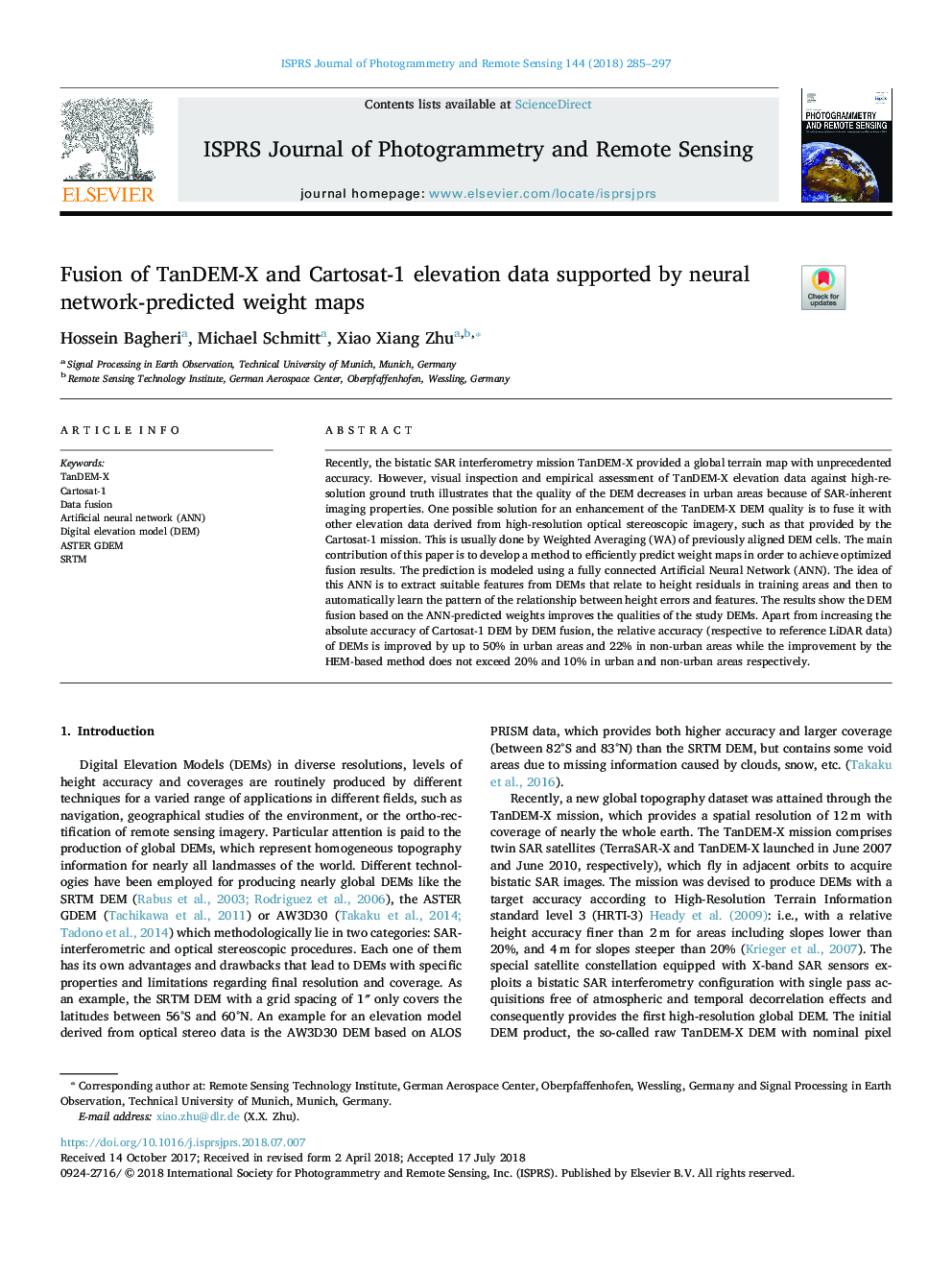| Article ID | Journal | Published Year | Pages | File Type |
|---|---|---|---|---|
| 6949037 | ISPRS Journal of Photogrammetry and Remote Sensing | 2018 | 13 Pages |
Abstract
Recently, the bistatic SAR interferometry mission TanDEM-X provided a global terrain map with unprecedented accuracy. However, visual inspection and empirical assessment of TanDEM-X elevation data against high-resolution ground truth illustrates that the quality of the DEM decreases in urban areas because of SAR-inherent imaging properties. One possible solution for an enhancement of the TanDEM-X DEM quality is to fuse it with other elevation data derived from high-resolution optical stereoscopic imagery, such as that provided by the Cartosat-1 mission. This is usually done by Weighted Averaging (WA) of previously aligned DEM cells. The main contribution of this paper is to develop a method to efficiently predict weight maps in order to achieve optimized fusion results. The prediction is modeled using a fully connected Artificial Neural Network (ANN). The idea of this ANN is to extract suitable features from DEMs that relate to height residuals in training areas and then to automatically learn the pattern of the relationship between height errors and features. The results show the DEM fusion based on the ANN-predicted weights improves the qualities of the study DEMs. Apart from increasing the absolute accuracy of Cartosat-1 DEM by DEM fusion, the relative accuracy (respective to reference LiDAR data) of DEMs is improved by up to 50% in urban areas and 22% in non-urban areas while the improvement by the HEM-based method does not exceed 20% and 10% in urban and non-urban areas respectively.
Keywords
Related Topics
Physical Sciences and Engineering
Computer Science
Information Systems
Authors
Hossein Bagheri, Michael Schmitt, Xiao Xiang Zhu,
